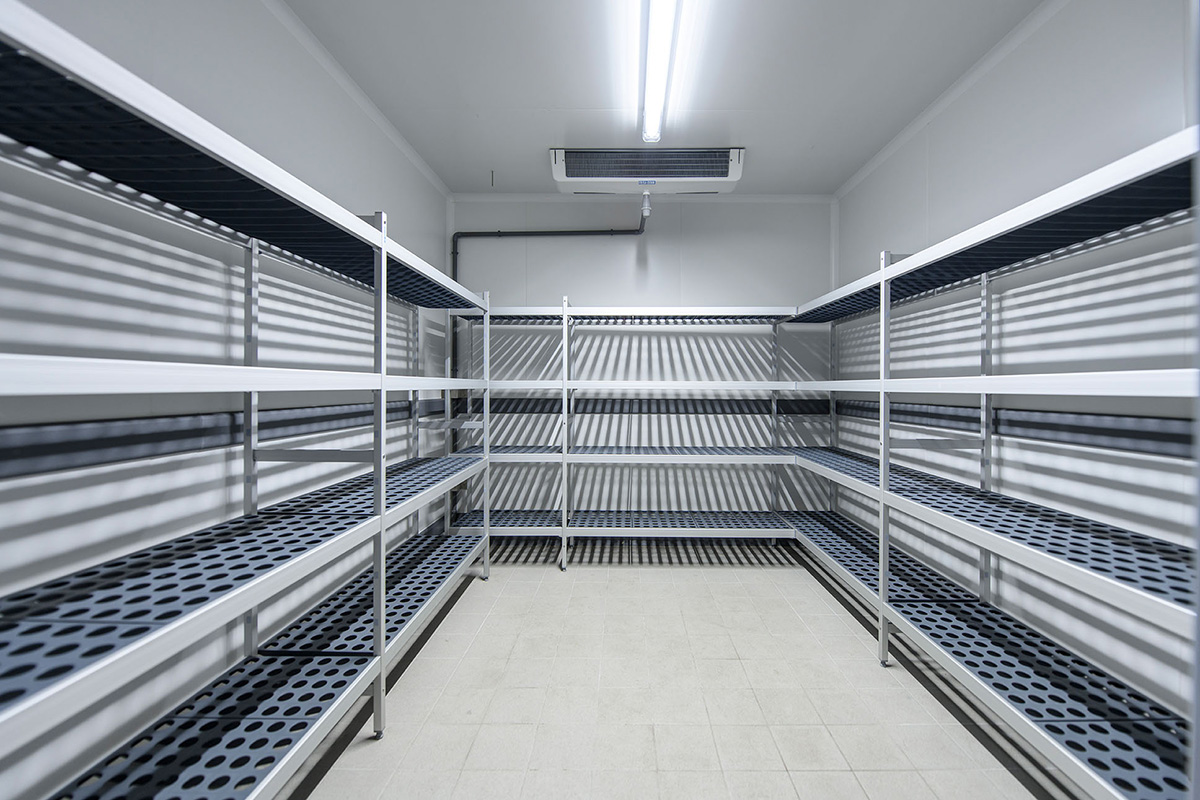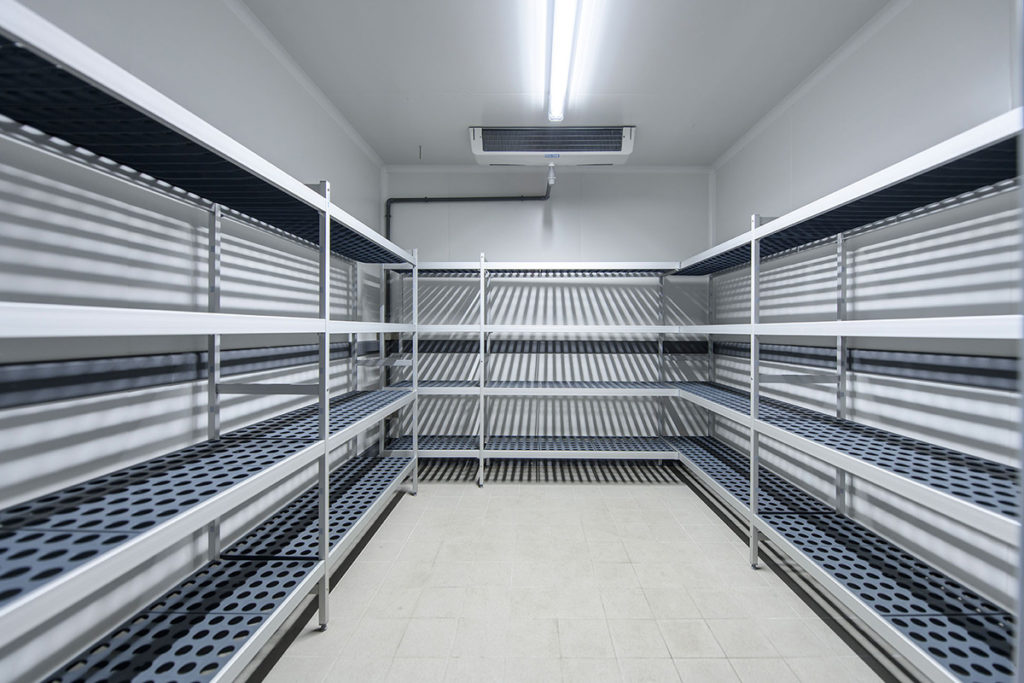
The Restauranteur’s Guide To Walk-In Cold Rooms
Whether in the context of managing a restaurant, cafe, or supermarket, if you’re a business owner who deals with temperature-sensitive products, refrigeration is a crucial part of ensuring the safe storage and consumption of food and drinks. Commercial refrigerators are commonly used to keep products at an ideal operating temperature, but for larger quantities of products with more specific temperature requirements, modular cold rooms are necessary requirements. Modular cold rooms are specially-built spaces which can establish a specific climate temperament for chilled or frozen food and boast numerous benefits for your restaurant or eatery. Read on to learn more about walk-in cold rooms’ origins, how modular cold room installation can benefit your business, and things to consider when acquiring one from a refrigeration company.
The Origins Of The Cold Room
As we have established, a walk-in cold room is a refrigerating chamber which can generate and control a specific temperature. Cold room manufacturers design the systems primarily for the medium-term cold storage of products which perish when not in a cold environment, such as fruits, vegetables, seafood, and meat. This might seem like a modern invention, but the underlying concept of walk-in cold rooms and low-temperature storage systems has been around for centuries.
Historians have reported that in as early as 1700 BC, Zimri-Lim, a ruler in Syria, commanded the construction of huge ice houses near the Euphrates. This in itself was the technological originator of the Yakhchal, which, meaning “ice pit” in Persian, was an ancient form of the large-scale refrigerator, formed in a dome shape with mortar materials that were resistant to heat transmission. Within the dome, snow and ice were stored underground to allow access to ice in the warmer months and allowed for excellent food preservation. To this day, modern refrigerators are still called Yakhchal in Persia, a country now known as Iran.
For any restaurateur, this rich cold room history is an inspiring reminder of the eternal joy of cooking, demonstrating how ensuring food is of the freshest quality is a dedication that can cross cultural and even generational boundaries.
How Do Cold Rooms Work?
Walk-in cold rooms work largely in the same way as standard refrigerators, but on a much larger scale. Usually, modular cold rooms have a resting temperature between -2°C and 10°C, but the specific temperature will depend on what’s being stored inside. If necessary, cold room manufacturers can have the room function as a freezer and provide temperatures as low as -50°C.
Modular cold rooms have a condenser fitted on the outside, with an evaporator unit and a working fluid called a refrigerant fitted inside. The refrigerant repeatedly evaporates from a liquid into a gas, as heat is transferred outside and the surrounding area is cooled. This process begins when the pressure of the refrigerant is reduced through a capillary tube, turning the refrigerant from a liquid to a cooler gas. Afterwards, the now gaseous refrigerant goes back into its liquid state through a compressor, which raises its pressure and temperature. This liquid refrigerant is then cooled again through a condenser and changes back into a gas once again when circulating back to the evaporator.
Different Types Of Walk-In Cold Rooms
There are three types of walk-in cold rooms provided by cold room manufacturers, and they mostly differ in where they store their evaporator and condenser units.
- Self-contained cold rooms, commonly built outside of the buildings they serve, feature the evaporator and condenser in one unit.
- Remote condensing unit cold rooms separate the condenser unit from the evaporator, placing it in a different location, such as the roof of the building.
- Multiplex cold rooms, built into the building, use a centralised system with an array of condenser units and evaporators.
If you’re undergoing cold room installation for your restaurant, consider the nature of your restaurant’s location as well as what evaporator or condenser units are needed when choosing which refrigeration system to employ.
How Can Cold Rooms Benefit Your Restaurant
Contacting a refrigeration company or a cold room manufacturer and undergoing modular cold room installation can have numerous benefits which will vastly improve many aspects of your business. Their consistent power in cooling and precise temperature control represents strong advantages over traditional refrigeration systems.
Ensures Hygiene
The prime benefit of walk-in cold rooms is the effectiveness in which they keep food fresh and represent a reliable hygienic storage solution. The high ventilation of the airflow ensures that the air is clean and without pollutants, whilst the cooling vents trap dust, debris, bacteria, and viruses – sucking them away from the cool room’s air.
Storage Space
If your restaurant or eatery has a lot of stock, cold rooms have a real size advantage over other refrigeration systems. A greater variety of food can be kept without having to worry about wasting space and the precise temperature control ensures that it’ll be consistently kept at a safe temperature. This increase in space will also allow your restaurant to widen and vary the ingredients used for dishes, providing more options on the menu.
Organisation
Walk-in cold rooms also provide increased organisational control of your restaurant’s stock. Items can be clearly ordered and will provide a speedier workflow. With standing refrigerators, kitchen staff often waste valuable time searching for ingredients in overstuffed and badly-organised standing refrigerators. Cold rooms are easy and effective to use for restaurant staff, with great convenience for using and stocking their contents.
Flexibility In Location
Rather than having standing fridges placed all over the kitchen, the isolated nature of walk-in cold rooms means that your restaurant’s cooking area will be more streamlined and efficient. More cooking space for the kitchen team will establish a better workflow and won’t create any sort of cramping which can often disrupt a restaurant’s efficiency in getting food from the kitchen to the table.
Easy Maintenance
Walk-in cold rooms are easier to maintain than other refrigeration systems and can be cleaned thoroughly with relative ease.
Energy Efficiency
A cold room is a more energy-efficient cooling system than powering numerous fridges and freezers, and the design of the cold room ensures that the temperature never fluctuates with less energy needed to reduce the temperature when in use.
Read on for more information about how to ensure the efficiency of your restaurant’s cold room.
Additional Features
Any good cold room manufacturer or installation service should provide extra additions to the refrigeration system that can further assist you and your business. For example, most modular cold rooms have an automatic defrosting function which actively melts ice, making it easier to clean with no food materials trapped. They also are usually installed with emergency escape measures, such as an internal panic button which opens the door.
In many cases, a ramp can be added to make it easier to use trolleys to load stock. This might not be used in the context of restaurant management, but in more industrial settings, this is very useful as it prevents the trip hazard from the cold room’s raised door frame. Whatsmore, automatic lights and self-closing doors can also be fitted to reduce running costs.
Keeping Your Cold Room Energy Efficient
With the current hike in energy prices, it is vital to take active steps to keep your cold room energy efficient in order to keep prices down and the safe temperature management of its contents.
When undergoing cold room installation, ensure that the walls, floors, and ceilings are constructed with heavy insulation in order to work efficiently. Most commonly, this insulation takes the form of foam sandwiched between thin steel or aluminium materials. Effective insulation ensures that the temperature inside and outside of the cold room is entirely separated, and conserves energy by requiring less work from the various evaporators and condensers. Sufficient insulation should be compounded by structural reinforcement, as walk-in cold rooms will hold a heavy amount of product.
You can increase the efficiency of your walk-in cold room through the installation of curtains at the doors. This prevents heat from entering the cold room when the door is opened and stops the system from using more energy to lower the temperature, whilst keeping the temperature stable and without fluctuation.
Two curtains can be used for this insulative system. A strip curtain, made up of thick plastic sheets cut into strips, and an air curtain, a wall of air basted at high velocity directly above the door. These measures will keep the temperature of your walk-in cold room low and provide increased energy efficiency.
Walk-In Cold Room Installation
If you think that your restaurant or business would benefit from cold room installation, Ian Hobbs Technical Services Ltd can help provide reliable and long-lasting refrigeration solutions. Beyond manufacturing and fitting bespoke walk-in, modular cold rooms, we have a maintenance service which ensures the consistent running of your refrigeration systems.
Since 1983 we’ve installed and maintained industry-leading modular cold rooms. We offer flexible fittings which will be able to suit whatever the location of your restaurant.
Get in touch with us today by calling 01761 414 356 or emailing info@ianhobbs.com.

 01761 414 356
01761 414 356



